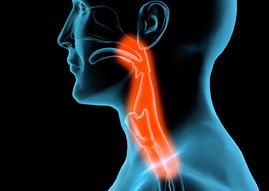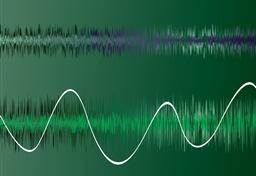Electrical Stimulation for Swallowing:
Satisfaction and Outcomes with eSWALLOW
November 16, 2012
ASHA Convention – Atlanta, Georgia
Susie Almon-Matangos, MS/CCC-SLP
Susie Murtha, MS/CCC-SLP
Salena Nikolaisen, MS/CCC-SLP
Tiffany Kelly, MS/CCC-SLP

Author Disclosure
Neither author has a financial or nonfinancial relationship relevant to the products or services
described, reviewed, evaluated, or compared in this presentation.
Abstract
Electrical stimulation as an adjunct to traditional dysphagia treatment is an increasing interest.
This paper describes eSWALLOW, a new electrical stimulation device, and presents SLP satisfaction, patient satisfaction, and clinical outcomes of a study in seven skilled nursing facilities with some SLPs who were VitalStim trained and some who were not.
Some Background Related to Electrical Stimulation for Swallowing
- Beginning in 2002 VitalStim was the only product on the US market approved for neuromuscular electrical stimulation with placement of electrodes on the anterior portion of the neck.
- This electrical stimulation (e-stim) treatment is provided along with traditional dysphagia treatment techniques to improve swallowing.
- Concerns have been raised about the cost of the VitalStim unit, training, and electrodes.
- VitalStim electrodes may be used for 60 minutes.
- Questions have been posed about efficacy, while many clinicians’ anecdotal results have been positive.
- Research has focused on identifying what makes this procedure successful for patients, some of whom have struggled with dysphagia for a significant period of time.
eSWALLOW
- Since February 2011 eSWALLOW is another e-stim device intended for “muscle re-education by application of external stimulation to the muscles necessary for pharyngeal contraction” (FDA).
- The product, training, and electrodes are less expensive.
- The eSWALLOW electrodes may be used up to three times.
- Many SLPs are unfamiliar with eSWALLOW and its clinical outcomes.
- eSWALLOW device can be plugged into the wall.
Description of This Study
- 7 skilled nursing facilities in 6 states used the eSWALLOW device and electrodes for 3 ½
months. - 5 facilities had SLPs who were VitalStim trained (9 SLPs, with one leaving the company before the end of the study).
- 2 facilities had SLPs who were not VitalStim trained (4 SLPs).
- Data were obtained to assess SLP clinical satisfaction, patient satisfaction, and general clinical outcomes.
Training
- The 4 SLPs who were not VitalStim trained completed the standard eSWALLOW training:
- 16 hours of online training followed by
- 4 hours of onsite observation/mentoring with an SLP who has been trained in e-stim for swallowing and using it for at least 6 months.
- The 5 SLPs who were VitalStim trained went through a 2-hour conference call led by eSWALLOW’s Clinical Director to help transition between using the VitalStim device and the eSWALLOW device.
Patients Treated with eSWALLOW
- 185 patients were on dysphagia caseload across all 7 facilities.
- 57 patients (30.81%) were treated with eSWALLOW.
- Medical diagnoses of the patients treated with eSWALLOW:
- CVA – 45%
- Dementia – 42%
- Diabetes – 7%
- Parkinson’s Disease – 3%
- Huntington’s Chorea – 2%
- Generalized Weakness – 1%
- Reasons that patients were not treated with eSWALLOW:
- Cognitive status of the patient
- Contraindications (cardiac condition, pacemaker, facial skin cancer)
- Patient refusal
- Only oral phase affected
- Treatment focused only on compensatory strategies
- Most frequent swallow phase affected was oral-pharyngeal.
- Provided an average of 9.30 eSWALLOW sessions per patient (ranging from 1 to 46).
- Beginning and ending severity of dysphagia:
- 58% started Moderate and ended Mild
- 37% started Mild and ended Mild
- 2% started Mild-Moderate and ended Normal
- 2% started Moderate and ended Mild
- 1% started Severe and ended Moderate-Severe (primarily with patients who had dementia)
Feedback from SLPs Who Were Not VitalStim Trained
- 75% felt initially prepared to use eSWALLOW.
- 100% felt prepared after receiving further training (mentoring from a VitalStim trained SLP).
- 100% wanted to continue using eSWALLOW.
- 75% thought eSWALLOW led to significant improvements.
- 50% had difficulty using electrodes 3 times (usually just 2 times).
- When trained in proper technique, 2 SLPs (50%) could use electrodes 3 times and 2 SLPs (50%) did not treat patients after this instruction.
- Some comments:
- “I wish to continue to use the device. I also feel that when used in conjunction with exercises we were able to discharge patients sooner than with just exercises alone.”
- “My patients who had no cognitive deficits noted immediate improvement with swallow following eSWALLOW sessions. One patient had received speech therapy for dysphagia at the hospital and in home health and reported (following eSWALLOW) that she felt it was more beneficial than anything done with her before.”
Feedback from SLPs Who Were VitalStim Trained
- 90% felt initially prepared to use eSWALLOW.
- 80% thought brief conference call training was sufficient.
- 100% wanted to continue using eSWALLOW.
- 100% thought eSWALLOW led to significant improvements.
- 50% stated they preferred eSWALLOW over VitalStim.
- 25% stated they preferred VitalStim over eSWALLOW.
- 25% stated they had no preference.
- 100% had difficulty using electrodes 3 times (usually just 2 times).
- When trained in proper technique, 7 SLPs (87.5%) could use electrodes 2-3 times.
- Some comments:
- “I have to use a lot of supplemental products like Coban or tape to make the electrodes stay.”
- “With a few patients who had naturally oily skin, even with the proper skin preparation, I found it was only beneficial when using new electrodes for the first time.”
- “The eSWALLOW electrodes were lighter weight and have lighter lead contacts. VitalStim electrodes are heavy and pull the skin.”
- “VitalStim electrodes are much better.”
- “No significant difference between VitalStim and eSWALLOW. Units are the same.”
- “eSWALLOW printed materials are less comprehensive and less organized than VitalStim.”
- “There isn’t a huge difference either way, so if cost is an issue I’d go with eSWALLOW.”
Findings
- eSWALLOW and VitalStim equipment, electrode placement, and clinical protocols are very similar.
- SLPs liked the fact that eSWALLOW can be plugged into an electrical outlet.
- Most VitalStim trained SLPs felt prepared to use eSWALLOW.
- All SLPs who were not VitalStim trained felt prepared to use eSWALLOW after the eSWALLOW training program (which includes 16 online hours and 4 mentoring hours with an e-stim trained SLP).
- All SLPs wanted to continue using eSWALLOW.
- Most SLPs thought eSWALLOW made a significant contribution to improvement.
- Half of the VitalStim trained SLPs preferred eSWALLOW.
- All SLPs initially had difficulty getting electrodes to stick three times.
- Most SLPs were successful getting electrodes to stick two times.
- When the proper procedure with electrodes was used, electrodes could be used 2-3 times.
Proper Electrode Procedure
- Use the provided Shield’nProtect wipe to clean skin.
- Place a drop of water on the electrode prior to use.
- Place a drop of water on the electrode after use.
- Store immediately in a closed plastic (ziplock) bag.
Conclusions
- eSWALLOW and VitalStim are very similar in terms of equipment, electrode placement, protocols, and outcomes.
- VitalStim trained SLPs can use eSWALLOW with only a brief explanation of differences between the two products.
- eSWALLOW electrodes stick for 2-3 uses when the proper procedure is utilized.
- eSWALLOW is a less expensive but clinically viable option to provide electrical stimulation for dysphagia.
References available upon request: susan.almon@aegistherapies.com
NMES Training Online

eSWALLOW is revolutionizing Neuromuscular Electrical Stimulation (NMES) therapy for the treatment of dysphagia. Now, that same revolution is taking place in the area of NMES training for the treatment of dysphagia.
Dysphagia

Dysphagia is a medical condition in which an individual experiences difficulty in swallowing. This condition is often the result of a stroke or radiation therapy. It is also common in Parkinson’s, Multiple Sclerosis, and Cerebral Palsy patients.
NMES

Electrical stimulation therapy has proven to be the most effective treatment for dysphagia. Electrical current is used to stimulate key muscles while the patient practices swallowing. The result is greatly improved swallowing function through muscle re-education.

